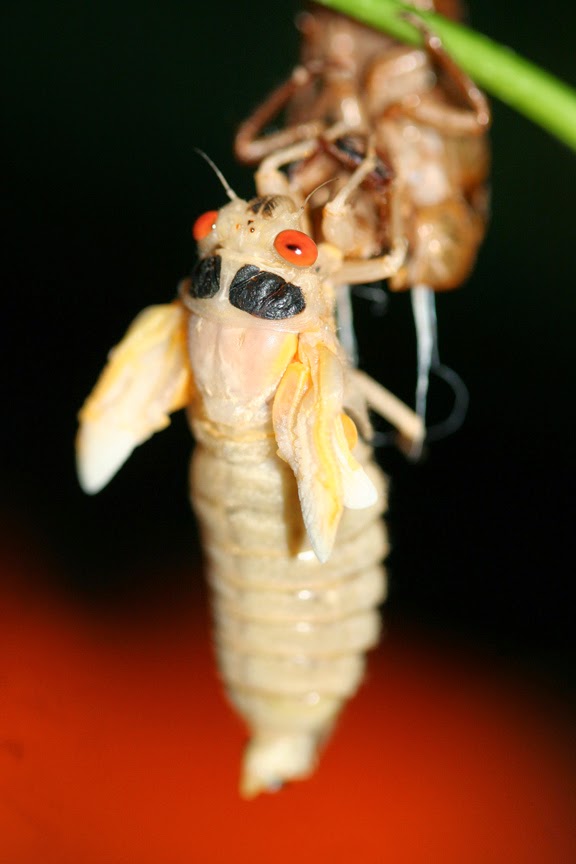Tibicen Canicularis
Suffolk County, Long Island, NY
September 1, 2013
 |
| Tibicen Canicularis - Greener morph |
 |
| Tibicen Canicularis - Greener morph |
 |
| Tibicen Canicularis - Greener morph |
 |
| When the nymph is ready to emerge it grabs securely onto a branch and freezes. |
 |
| The nymph shell splits around the top of the thorax |
 |
| It slowly works its head out first. |
 |
| Once the head is out it leans backwards so it can pull out its legs. |
 |
| It slowly works its legs out of the shell. This is a delicate process because sometimes extremities could get stuck in the shell and the nymph will be stuck or one of the legs could get broken off. |
 |
| The nymph will hang upside down for a while to allow the top half of its body and legs to harden. |
 |
| Its legs must harden and be strong enough to support the weight of its newly emerged body from its shell. |
 |
| The Cicada expands its wings by pumping hymolymph (cicada blood) into its wings to expand them. |
 |
| The cicada will hold its wings flat while they are expanding. |
 |
| The Magicicada septendecim's body turns black and the eyes are a striking red color. |
 |
| It is amazing to know that this is a 17 year old insect! |